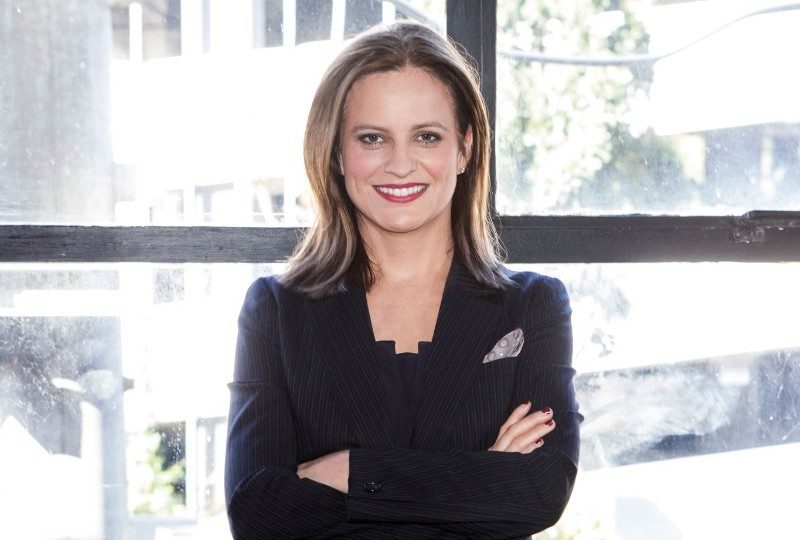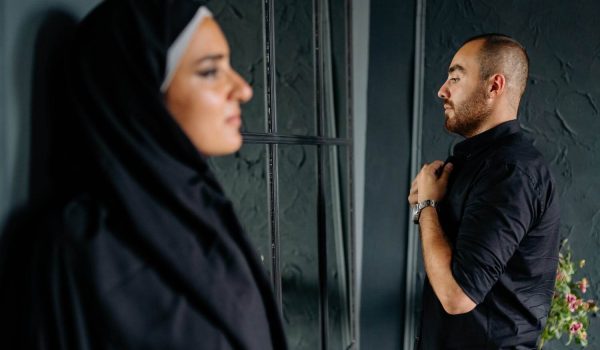Stephanie Hope
Stephanie Hope
Senior Associate
Stephanie comes to Melbourne Family Lawyers with over ten years of experience in family law, including both property and parenting matters. She has a wide breadth of experience, knowledge and success in negotiation, mediation, Family Dispute Resolutions Conference (FDRCs) and litigation (Court proceedings).
Stephanie has been successful in litigated matters but also prides herself in successfully negotiating favorable outcomes for most of her clients; sparing them from the financial and emotional burden of final trials.


Silvio Auditore
Solicitor

Alison Loach
Senior Associate

Giuseppe Rubino
Senior Associate

STEPHANIE HOPE
Senior Associate

KATHERINE SIOTOS
Solicitor

Hayder Shkara
Director
Related Articles & Cases

- Divorce
- 5 Aug 2023
- Hayder Shkara
In recent times, an increasing number of Australian couples have found themselves in a unique situation known as “living separated under one roof.”
This term refers to couples who have decided to separate but continue residing in the same household due to various reasons such as financial constraints or co-parenting responsibilities.
While this arrangement might seem unconventional, it’s essential to understand how family law in Australia handles such situations and the implications it may have for the parties involved.
Defining Living Separated Under One Roof
“Living separated under one roof” occurs when a couple has formally decided to end their relationship, but for practical reasons, they continue to share the same residence.
Common reasons for choosing this arrangement include maintaining stability for the children, affordability concerns, or the inability to find alternative living arrangements immediately.
The Australian Family Law Perspective
In Australia, the Family Law Act 1975 governs family matters and the dissolution of relationships, including de facto and married couples.
When it comes to “living separated under one roof,” the law recognises that separation doesn’t always necessitate living in separate residences.
The key factor in determining separation is the intention of the parties to end their relationship.
To establish separation under one roof, the couple must demonstrate:
1. Communication of Intent: Both parties should communicate their intention to separate to each other, family, and friends. This may involve notifying others about their decision and ensuring they are no longer presenting themselves as a couple in public.
2. Physical Separation of Lifestyle: While living under one roof, the couple should display a significant change in their lifestyle and dynamics, showing that they are not functioning as a couple anymore. This may include dividing household chores, financial arrangements, and sleeping arrangements.
3. No Resumption of Relationship: A critical element is that both parties have no intention of reconciling the relationship or resuming it as a couple.
Also read: Understanding the Legal Differences of Separation and Divorce
Is it possible to get a divorce while still living together?
Yes, it is possible to get a divorce while still living together. In Australia, to apply for a divorce, the Family Law Act 1975 requires the following:
• Separation: The couple must have been separated for at least 12 months before filing for divorce. This separation requirement doesn’t necessarily mean living in separate households. As mentioned earlier, “living separated under one roof” is recognised as a valid form of separation, as long as there is a clear intention to end the relationship, and other separation criteria are met.
• Irretrievable Breakdown: The marriage must have irretrievably broken down, meaning there is no reasonable likelihood of reconciliation.
• Legal Requirements: Either you or your spouse must be an Australian citizen, have been living in Australia for at least 12 months before filing, or consider Australia your permanent home.
When applying for divorce in Australia, you will need to provide evidence that you and your spouse have been living separately and apart for at least 12 months.
This evidence can include affidavits from yourself, your spouse, and other witnesses who can confirm your separation.
Living separated under one roof might require additional evidence to show that you are indeed leading separate lives despite sharing the same residence.
This could include financial records, communication logs, and other documentation that demonstrates the changed nature of the relationship.
It’s essential to consult with a divorce lawyer to ensure you meet the legal requirements for divorce and properly document your separation, especially if you are living separately under one roof.
Additionally, obtaining legal advice can help you navigate other related issues, such as property settlement, parenting arrangements, and financial support.

Example of Case, Separated under One Roof
Elizabeth, a person in a complex situation, approached our law firm. She and her estranged husband, Peter, were still living together under one roof despite their decision to end their marriage.
Elizabeth sought our help and we held an initial consultation with Elizabeth to understand her situation and goals.
We explained to Elizabeth that living separated under one roof is recognised as a valid form of separation in Australian family law. We informed her about the requirements to establish their separation.
To support the divorce application, we helped Elizabeth gather evidence of their separation, such as separate finances, living arrangements, and changes in their relationship dynamics. We also prepared affidavits from Elizabeth and a supporting witness.
With the necessary evidence in hand, we assisted Elizabeth in preparing and filing the divorce application with the Family Court of Australia. We ensured that all required documents were accurate and complete.
Once the court was satisfied with the evidence and the required waiting period had passed, we helped Elizabeth obtain the divorce certificate, officially ending her marriage to Peter.
Our law firm enabled Elizabeth to successfully file for divorce while still living under one roof with Peter, allowing her to move forward with confidence and clarity.
Also read: How to Separate Amicably: 6 Helpful Tips
Seek Legal Advice
Living separated under one roof is an unconventional but increasingly common situation for couples in Australia facing separation.
It is crucial to understand that, from a legal standpoint, the intention to end the relationship and the changes in lifestyle are more critical than physical living arrangements.
Seeking legal advice early on can help navigate the complexities of family law, ensuring that the rights and interests of both parties and any children involved are protected during this unique phase of their lives.

- Divorce
- 5 Feb 2024
- , Hayder Shkara and admin
How Long After a Divorce Can You Remarry in Australia?
In Australia, you can remarry one month and one day after your divorce is finalised. This waiting period is mandated by Section 59 of the Family Law Act 1975.
Ensuring the divorce order is final before planning a wedding is crucial, as remarrying without a finalised divorce is considered bigamy.
It can also help to lodge a Notice of Intended Marriage (a legal document that must be given to a marriage celebrant in Australia at least one month before the wedding, indicating the couple’s intention to marry) with an authorised celebrant at least one month before your wedding.
Delays in the divorce process should be factored in when planning your remarriage.
🔑 Key Takeaway: Ensure your divorce order is finalised and lodge your Notice of Intended Marriage in time.
Understanding the Divorce Process
In addition to understanding the basic requirements of the divorce process in Australia, it’s also important to be aware of the documentation required.
This includes providing evidence of the marriage and the separation period. Moreover, if there are children involved, the court must be satisfied that proper arrangements have been made for their welfare.
The divorce process can be complex, and it’s advisable to seek legal advice to navigate it effectively.
🔑 Key Takeaway: Ensure proper documentation and arrangements, especially if children are involved, and consider seeking legal advice for a smooth divorce process.
Emotional and Practical Considerations
Remarrying after a divorce is not just a legal matter but also involves emotional and practical considerations. It’s important to give yourself time to heal emotionally and mentally before entering into a new marriage.
Additionally, sorting out financial matters and considering the well-being and adjustment of any children involved are crucial steps before remarrying.
🔑 Key Takeaway: Consider your emotional readiness and practical arrangements before remarrying.

Overseas Divorces and Legal Recognition
If your divorce was granted overseas, it’s essential to understand its recognition in Australia. Overseas divorces are generally recognised if they meet specific legal requirements, such as jurisdiction and proper legal procedures.
Registration of overseas divorce in Australia is advisable to ensure legal clarity and avoid complications.
🔑 Key Takeaway: Ensure your overseas divorce is recognised in Australia to avoid legal issues.
How We Can Help You: How Long After a Divorce Can You Remarry in Australia?
Recently, our law firm assisted a client seeking guidance on how long it takes to remarry in Australia after a divorce. The male client approached us with questions about the legal timeframe for remarriage post-divorce.
Our firm assisted by explaining the requirements of the Family Law Act 1975. We informed him that he could remarry one month and one day after the divorce is finalised, highlighting the importance of ensuring the divorce order is final to avoid legal complications such as bigamy.
Our team also advised him to lodge a Notice of Intended Marriage with an authorised celebrant at least a month before the planned wedding. We emphasised the importance of considering potential delays in the divorce process when planning for remarriage.
We maintained a supportive approach throughout the process, ensuring the client felt informed and confident about his next steps in planning for a future remarriage.
Our firm’s expertise in family law and commitment to client care was instrumental in providing clear, concise, and legally sound advice tailored to his unique situation.
Always Seek Legal Advice
Navigating the legalities of remarriage after a divorce, especially when dealing with overseas divorces, can be complex.
It’s highly recommended that you seek legal advice to understand your rights and obligations and to ensure that all legal procedures are correctly followed.

- Divorce
- 17 Jan 2024
- and Hayder Shkara
Islam indeed recognises divorce, but it is considered a last resort.
Marriage in Islam is seen as a contract and a significant commitment filled with mercy, compassion, and tranquillity. Although divorce is permissible, it is not encouraged and is viewed as a final resort.
🗝️ Key Takeaway: Islam allows for divorce but places a strong emphasis on it being a final option after all efforts at reconciliation have failed.
Forms of Divorce in Islamic Law
There are several forms of divorce in Islamic law, including talaq (unilateral repudiation by the husband), khul’ (mutual divorce), and faskh (dissolution by a religious court).
Each form has specific rules and conditions to ensure justice and fairness for both parties.
🗝️ Key Takeaway: Islamic divorce can take different forms, each with its own set of rules and conditions.
Talaq – Husband’s Initiation of Divorce
Talaq, the most common form of divorce, is initiated by the husband and does not require the wife’s consent.
It involves a waiting period for the wife, during which reconciliation is possible. The husband must provide financial support during this period, and the wife retains her dower.
🗝️ Key Takeaway: In talaq, the husband initiates divorce, but the process includes protections for the wife, such as financial support and dower retention.
Khul’ – Mutual Divorce
In khul’, the wife can initiate divorce by returning her dower or offering compensation to the husband.
This form of divorce is immediate and irrevocable once agreed upon, and both parties have certain financial responsibilities.
🗝️ Key Takeaway: Khul’ provides a way for wives to initiate divorce, balancing rights and responsibilities between spouses.
Also read: Permanent Residency and Divorce Australia: 4-Point Comprehensive Guide
Faskh – Dissolution By A Religious Court
Faskh in Islamic law is a form of divorce granted by a religious court, usually initiated by the wife in cases where the marriage becomes untenable.
Common grounds for faskh include abuse, neglect, or the husband’s failure to fulfill marital obligations.
The process involves a judicial review where the wife presents her case, and if the court finds the reasons valid, the marriage is dissolved.
This ensures that the rights of both parties, especially the wife, are protected under Islamic law.
🗝️ Key Takeaway: Faskh provides a judicial avenue for wives to seek divorce in challenging marital situations.

Is Sharia Law Practiced in Australia?
Sharia law, as a comprehensive legal framework, is not formally implemented in Australia’s national legal system.
However, the Muslim community occasionally adheres to aspects of Sharia within the confines of Australian law, particularly in personal matters like marriage and divorce.
It’s important to note that any religious practices, including those derived from Sharia, must align with the legal requirements of Australian law.
In family law matters, Australian courts remain the ultimate authority.
🗝️ Key Takeaway: While individual Muslims may observe aspects of Sharia in personal matters, it’s within the context of, and subject to, Australian law.
Divorce in Islam: What Is the Process
Divorce in Islam involves several steps, starting with a sincere attempt at reconciliation. If reconciliation fails, the form of divorce (talaq, khul’, or faskh) is chosen based on the circumstances.
In talaq, the husband initiates the divorce, while in khul’, the wife offers compensation for separation.
Faskh requires judicial intervention. All forms involve a waiting period (iddah) to ensure any decisions made are not hasty and to determine pregnancy.
The welfare of children and financial settlements are also key considerations.
🗝️ Key Takeaway: The divorce in Islam is thorough and prioritises reconciliation before moving forward with a planned process that respects both parties’ rights and obligations.
Child Custody and Support Post-Divorce
Islamic law pays special attention to the welfare of children in the event of a divorce.
The father is typically responsible for financial support, and custody decisions are made with the children’s best interests in mind, often favouring the mother for young children.
🗝️ Key Takeaway: The welfare of children is paramount in Islamic divorce, with clear guidelines for custody and financial support.
Finalising Divorce and Remarriage in Islam
Once the waiting period is completed, the divorce is finalised. Islam discourages indecisiveness in divorce decisions, encouraging amicable and fair treatment of both parties.
There are limits on remarriage after divorce, particularly after a third divorce, to prevent frivolous separations and reconciliations.
🗝️ Key Takeaway: Divorce in Islam is a structured process with clear guidelines for finalisation and remarriage, emphasising fairness and respect.
Reform and Contemporary Practice
Efforts to reform Islamic divorce laws have focused on restricting unilateral repudiation by men and increasing women’s access to divorce.
While reforms have been made in some Muslim-majority countries, the application and interpretation of these laws can vary significantly.
🗝️ Key Takeaway: Ongoing reforms in Islamic divorce laws aim to balance gender equity and reflect contemporary needs.
The Importance of Legal Advice
Navigating the complexities of divorce in Islam underscores the importance of seeking professional legal advice.
This is especially crucial in countries where Islamic law intersects with local legal systems.
Legal professionals can offer guidance that aligns with both religious and civil obligations, ensuring that the rights and responsibilities of all parties are respected and upheld.
It is important for individuals considering divorce to consult with legal experts to understand their rights, responsibilities, and the implications of their decisions within the context of their specific situation.
🗝️ Key Takeaway: Professional legal advice is essential in divorce proceedings to ensure compliance with both Islamic and local laws and to safeguard individual rights and interests.

- Same-Sex
- 5 Feb 2024
- Hayder Shkara
Yes, gay marriage in Australia is governed by federal law, and the legislation that addresses this issue is the Marriage Amendment (Definition and Religious Freedoms) Act 2017. Here’s what the law says:
- Definition of Marriage: The Act amended the Marriage Act of 1961, changing the definition of marriage from “the union of a man and a woman” to “the union of two people to the exclusion of all others voluntarily entered into for life.” This change allowed same-sex couples to marry legally.
- Recognition of Foreign Marriages: Same-sex marriages conducted abroad, previously not recognised in Australia, became recognised under this amendment.
- Religious Protections: The Act includes provisions allowing religious ministers and certain celebrants with solid religious or conscientious beliefs against same-sex marriage to refuse to solemnise such marriages.
- Anti-Discrimination Measures: While offering these protections to religious bodies, the law also contains anti-discrimination measures, ensuring that businesses and service providers cannot refuse services to same-sex couples based on their marital status.
The passage of the Marriage Amendment Act marked a pivotal moment in the legal recognition of same-sex relationships in Australia, ensuring equality in marriage law and reflecting a significant shift in societal attitudes and norms.
Do Same-Sex Couples Have the Same Legal Rights as Heterosexual Couples?
Since the legalisation of gay marriage, the legal landscape has shifted to ensure same-sex couples enjoy equal rights.
Marriage Rights
With the passage of the Marriage Amendment (Definition and Religious Freedoms) Act 2017, same-sex couples have the same right to marry as heterosexual couples. The definition of marriage now includes “the union of two people,” allowing for legal recognition of same-sex unions.
Divorce and Separation
Same-sex couples now have access to the same legal processes for divorce and separation as heterosexual couples. This includes property settlement, spousal maintenance, and other legal considerations during a divorce.
Parental Rights
Same-sex couples in Australia have the same legal rights concerning parenting, including adoption, surrogacy, and access to fertility treatments. They can also jointly apply for parenting orders, and the law recognises both partners as legal parents in various circumstances.
Inheritance and Estate Planning
Legal recognition of same-sex marriage ensures same-sex spouses have the same inheritance rights as heterosexual spouses. This includes rights to property, assets, superannuation, and other financial matters upon the death of a partner.
Are There Any Differences in the Divorce Process for Same-Sex Couples?
For both same-sex and heterosexual couples, the eligibility criteria for divorce are the same. This includes the requirement that the couple must be separated for at least 12 months and that there is no reasonable likelihood of reconciliation.
The process of filing for divorce is identical for both types of couples. It involves applying to the Federal Circuit Court of Australia, either jointly or individually, along with supporting documents, such as a marriage certificate.
What Is Its Impact on Society: Gay Marriage in Australia
The legalisation of gay marriage in Australia was not merely a change in the legal code but a recognition and validation of love and commitment between same-sex couples.
Prior to the Marriage Amendment Act 2017, same-sex couples were excluded from the institution of marriage, a cornerstone of societal structure.
The law’s transformation represented an acknowledgment at the highest level that LGBTQ+ relationships are equally valid, deserving of the same rights and protections as heterosexual relationships.

Marriage Equality Statistics in Australia
The landscape of marriage in Australia has evolved significantly, particularly following the legalisation of same-sex marriage in 2017. This change has profoundly impacted the dynamics of marriage and family composition in the country. Here’s an overview of the key statistics reflecting this shift:
Rise in Same-Sex Couples
- Since the legalization of same-sex marriage in 2017, there has been a notable increase in the number of same-sex couples living together. In 2021, 78,000 same-sex couples lived together, a 68% jump from 47,000 in 2016.
- Same-sex couples accounted for 1.4% of all couples living together in Australia in 2021, up from 0.9% in 2016.
- The number of women in same-sex relationships has risen rapidly in recent years, with the number of male and female same-sex couples being almost identical in 2021.
Marriage Equality and Its Impact
- The Australian Marriage Law Postal Survey in 2017 showed a majority (61.6%) in favour of changing the law to allow same-sex couples to marry.
- Following the amendment to the Marriage Act 1961, there were 2,902 same-sex marriages in 2020, representing 3.7% of all marriages in Australia.
- More female same-sex couples married (61.4% of all same-sex marriages) than male same-sex couples (38.5%).
Same-Sex Couples with Children
- In 2021, 17.3% of same-sex couples had children living with them.
- Female same-sex couples were more likely to have children (27.7%) compared to male same-sex couples (7.0%).
Demographics and Cultural Diversity
- The median age for people in same-sex couples living together was 40 years old in 2021, younger than the median age of all couples living together (49 years old).
- 65% of people in same-sex couple relationships reported Australia as their country of birth.
- The rate of mental health conditions reported by people in these relationships was double the rate reported for all people in couple relationships.
Marriage and Divorce Trends
- In 2020, there were 78,989 marriages registered in Australia, a significant decrease from previous years, mainly due to COVID-19 restrictions.
- The crude marriage rate in 2020 was the lowest ever recorded at 3.1 marriages per 1,000 people.
- Divorces in 2020 increased slightly to 49,510, with the crude divorce rate remaining at 1.9 divorces per 1,000 people.
The statistics show a society increasingly embracing diversity in relationships and family structures. The legalisation of same-sex marriage has not only provided legal recognition but also encouraged a societal shift towards greater acceptance and inclusion.
Helping Our Clients With Their Union
As a law firm specialising in family law, we were approached by Donna and Lea, a same-sex couple planning their marriage after the passage of the Marriage Amendment Act in Australia.
Donna and Lea came to us with excitement and a bundle of questions about the legal process. Our first step was to provide them with an initial consultation, where we outlined the legal framework for gay marriage in Australia and answered all their inquiries.
We then assisted the couple in gathering and preparing the necessary documents for a prenuptial agreement.
In the final stages, we worked closely with Donna and Lea to ensure that all legal aspects were covered, including pre-marital agreements and legal advice on shared assets. We wanted to make sure that their legal union was as seamless and joyful as their personal one.
The recognition of gay marriage in Australia was a critical milestone in the country’s pursuit of equality and human rights. With a rich legal history leading to the Marriage Amendment Act of 2017, Australia joined the ranks of nations that honour the love and commitment of all its citizens, regardless of sexual orientation.
The ongoing discussions around religious freedoms and the societal impacts of this legislation continue to shape the landscape of gay marriage in Australia. The story is far from over, and the evolution of Australian family law continues to reflect the changing norms and values of the society it serves.

- Custody
- 24 Apr 2023
- Hayder Shkara
Child custody disputes can be emotionally stressful and legally complicated. When a mother is breastfeeding, it may be necessary to take additional factors into account.
The Family Law Act 1975 governs child custody issues in Australia, recognising the necessity of breastfeeding for infants’ health and well-being.
Here is a closer examination of how Australian law deals with child custody when the mother is breastfeeding.
Practical Considerations
Breastfeeding can pose practical challenges for shared care arrangements, such as when the child needs to be fed during visits with the non-resident parent.
In such cases, the court may order that the mother provides expressed breast milk or formula for the child during visits or that visits take place around feeding times.
Visitation Schedule for Breastfeeding Infant
If the mother is breastfeeding, there are several parenting arrangement options available that can take into account the needs of both the mother and the child. Here are some possible arrangements:
- Sole custody with regular visits: The mother may have sole custody of the child, but the father can have regular visits with the child. The visits can take place at times that do not interfere with breastfeeding, or the mother can provide expressed breast milk or formula for the child during visits.
- Joint custody with breastfeeding-friendly arrangements: The parents can agree to joint custody, where the child spends time with both parents. The parenting arrangements can be breastfeeding-friendly, such as having shorter but more frequent visits with the father or having visits during feeding times.
- Temporary custody arrangements: If the child is still a newborn or infant, the mother may need temporary custody until breastfeeding is established. After this period, the parents can revisit the custody arrangements and adjust as needed.
- Mediation and negotiation: If the parents cannot agree on the custody arrangements, they can seek the help of a mediator to facilitate discussions and come up with a mutually agreeable arrangement that takes into account the needs of the child and the mother’s breastfeeding needs.
- Court-ordered arrangements: If the parents cannot agree on the custody arrangements, they can seek the court’s intervention. The court will consider the best interests of the child and may order arrangements that take into account the mother’s breastfeeding needs.
In any event, it is essential to prioritise the child’s needs and guarantee their safety and care. The parents can work together to create a parenting plan that benefits everyone, or they can seek professional assistance of custody lawyers if necessary.

Presumption of Shared Parental Duties
One of the most important goals is to ensure that children have meaningful relationships with both parents when it is safe and in their best interests.
There is a presumption of shared parental responsibility, which means that both parents should have an equal voice in significant decisions concerning the child’s upbringing, such as education, healthcare, and religion.
However, this does not imply that equal time or shared care is suitable for all families.
The family court will consider a variety of factors, such as the child’s age, the relationship between the parents, the child’s wishes (if they are mature enough to express them), and the practicability of proposed arrangements.
Also read: Does the Mother Always Have Automatic Custody?
Breastfeeding and Its Importance
The court must consider the significance of breastfeeding to the child’s health and well-being when a mother is breastfeeding.
Antibodies and essential nutrients in breast milk protect infants from illness and infection.
Additionally, breastfeeding facilitates bonding between mother and infant, which is essential for emotional development.
If the primary caregiver is the mother and the child is still breastfeeding, the court will likely prioritise the child’s need for continuity and stability in their care arrangements.
Breastfeeding may have a significant impact on the duration and frequency of visits with the non-resident parent.
In some instances, the court may order that the non-resident parent’s visits be supervised or occur at specific times to minimise disruption of the child’s breastfeeding routine.
Breastfeeding and Winning the Custody Battle
Can a mother use breastfeeding to win child custody battle? No, a mother cannot use breastfeeding to automatically obtain custody of her child in a custody dispute with the father.
Decisions regarding child custody when mother is breastfeeding. are based on the child’s best interests, and factors such as the child’s relationship with each parent, their physical and emotional well-being, and their ability to satisfy the child’s needs are considered.
Although lactation is regarded as essential for the health and well-being of infants, it is not a factor in custody decisions.
If the mother is the primary caregiver and the child is still breastfeeding, the court may consider the child’s need for continuity and stability in care arrangements, as well as the feasibility of proposed custody arrangements.
However, this does not automatically grant custody to the mother.
Also read: Does the Mother Have Full Custody?
Conclusion
In conclusion, child custody when mother is breastfeeding is a complex issue that requires careful consideration of the child’s best interests. The court will take into account the importance of breastfeeding for the child’s health and well-being and strive to ensure that both parents have a meaningful relationship with the child.

- DivorceProperty
- 14 Mar 2024
- and Hayder Shkara
Who Keeps the Engagement Ring After a Divorce Australia?
In Australia, the question of who keeps the engagement ring after a divorce hinges on several factors, including how the ring was acquired and the intentions of both parties involved.
While the question of who retains ownership of the ring may seem straightforward, the legal landscape offers nuanced considerations that require careful examination.
This article delves into the intricacies of engagement ring ownership within the context of divorce proceedings in Australia, providing clarity on this often contentious issue.
🔑 Key takeaway: Ownership of an engagement ring after a divorce in Australia is determined by various factors, including the circumstances of acquisition and the intentions of the parties involved.
Understanding the Legal Framework: Factors Influencing Ownership
The legal framework considers principles of property law and equitable distribution, often viewing engagement rings as gifts.
However, whether these rings are classified as matrimonial property depends on specific circumstances.
Factors such as the timing of the gift, any prenuptial agreements, and the intention behind the exchange play pivotal roles in determining ownership rights.
🔑 Key takeaway: Ownership of the engagement ring is influenced by factors such as the timing of the gift, prenuptial agreements, and the intention behind the exchange.
Examining Precedents and Case Law: Legal Precedents in Engagement Ring Disputes
Australian courts have grappled with numerous engagement ring disputes, setting precedents that inform subsequent cases.
While there is no definitive ruling, courts typically consider the nature of the gift and the parties’ conduct when adjudicating ownership rights.
In cases marked by deceit or breaches of trust, the balance may shift in favor of the aggrieved party, underlining the significance of transparency and honesty in addressing disputes.
🔑 Key takeaway: Legal precedents highlight the importance of transparency and honesty in disputes over engagement rings, with courts considering factors like the gift’s nature and the behavior of the parties involved.

Navigating Legal Proceedings: Strategies for Resolving Disputes
When facing a dispute over an engagement ring, resolving the issue amicably through mediation or negotiation is typically preferable to protracted and costly litigation.
Collaborative approaches minimise emotional strain and provide the parties with greater control over the final resolution.
🔑 Key takeaway: Pursuing amicable resolution through mediation or negotiation can alleviate emotional strain and provide greater control over the outcome of engagement ring disputes.
Seeking Legal Counsel: The Role of Family Law Practitioners
Navigating the complexities of engagement ring disputes requires expert legal guidance from experienced family law practitioners.
A skilled lawyer can offer invaluable advice on the legal implications of ownership rights and advocate for their client’s interests during negotiations or court proceedings.
🔑 Key takeaway: Consulting with a knowledgeable family law practitioner can ensure ownership rights are protected.
Balancing Legal Considerations and Emotional Closure
The resolution of engagement ring disputes in Australia demands a delicate balance between legal considerations and emotional closure.
While the legal framework provides guidelines for determining ownership rights, the emotional significance of engagement rings underscores the need for sensitivity and empathy in resolving disputes.
By prioritising open communication, seeking legal advice, and engaging in respectful dialogue, couples can navigate this challenging aspect of divorce with integrity and compassion.
🔑 Overall key takeaway: Balancing legal considerations with emotional sensitivity is essential for resolving engagement ring disputes with fairness and compassion.

